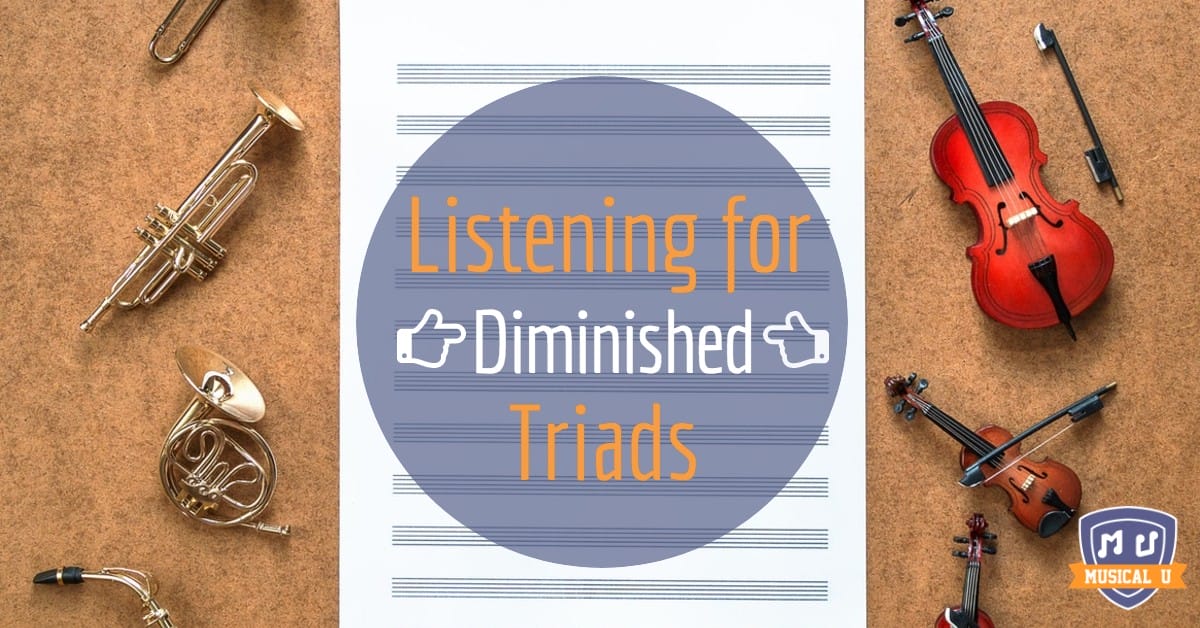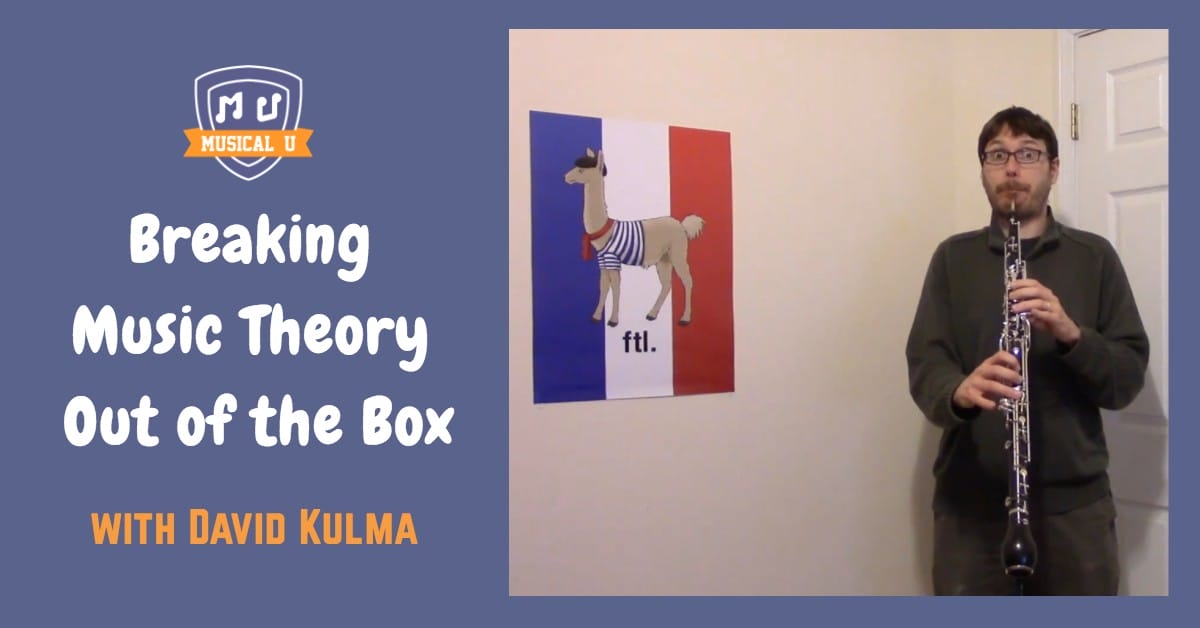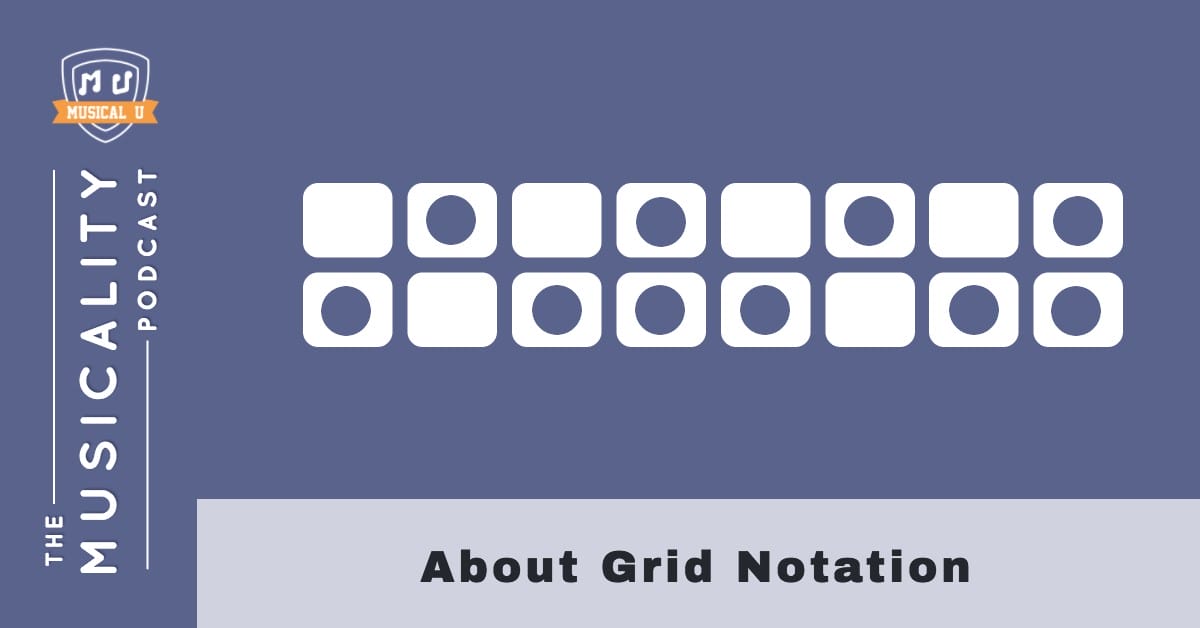How do you enhance your music practice?
Many of us do this through getting our knowledge from something other than textbooks. This is made easy with the myriad of engaging tools, videos, tutorials, and apps available to the modern musician.
This week on Musical U, we interview the master of making music theory fun, examine a simple beat-crafting tool that acts as a fantastic rhythm teacher, and get a music technology expert’s advice on the best tools available today.
Before we dive into all that, though, we step outside the digital world and look at a chord you’ve definitely heard, but perhaps never put a name to…
Diminished Chords
Because major and minor chords so often take center-stage when we’re discussing songs and their chord progressions, the beauty of the diminished chord is often overlooked.
Though diminished chords are interspersed throughout virtually every genre of music you can imagine, it can be tricky to recognize them by ear.
 In Listening for Diminished Chords, we’re giving you the ultimate crash course in recognizing these distinctive chords, with basic theory on how diminished chords are made, three different methods of listening for them, and some listening exercises to get you practicing this skill.
In Listening for Diminished Chords, we’re giving you the ultimate crash course in recognizing these distinctive chords, with basic theory on how diminished chords are made, three different methods of listening for them, and some listening exercises to get you practicing this skill.
Using diminished chords can add a great deal of interest to the music that you are playing. But how do you actually put this great sound into your hands? FA Chords shows you how to create the unique chord shapes that you need to make on the guitar in order to play diminished chords.
As you can see from the example list of songs with diminished chords, every musical style can take advantage of this wonderful tonality. Even the Beatles made great use of this type of chord in the song “You Won’t See Me” from the album Rubber Soul. For a short lesson in this classic song, don’t miss this post from Every Sound There Is.
Diminished chords make a world of difference in your chord progressions, adding interest and intrigue that is sure to capture the listener’s attention. Piano Lessons with Warren describes how to fit diminished chords into your progressions.
Music Tech
As technology evolves, so does music education.
With various apps, tools, and websites, teaching yourself music theory and an instrument has never been so engaging and accessible. The only thing you have to do is decide what tools work for you, then put them to good use!
 This week on the Musicality Podcast, we got the chance to interview Katie Wardrobe, a master of tech tools and apps for practical teaching purposes. She shares her advice on how to hone your musicality and her suggestions on the best technology to accelerate your learning in Top Musicality Tools and Tech, with Katie Wardrobe.
This week on the Musicality Podcast, we got the chance to interview Katie Wardrobe, a master of tech tools and apps for practical teaching purposes. She shares her advice on how to hone your musicality and her suggestions on the best technology to accelerate your learning in Top Musicality Tools and Tech, with Katie Wardrobe.
Katie mentioned so many great resources that it’s hard to know where to get started. Perhaps you would be interested in playing a little game of Staff Wars, and testing your musical abilities in this fun and interactive environment!
Besides games, how can you use music technology to help develop your musicality? We’ve talked a lot about transcribing music at Musical U, and the skills that being an active transcriber can help you develop. For a helping hand, try AudioStretch for your next transcription.
It was fantastic to have someone so knowledgeable about current technologies on the show. Music technology has not only changed how musicians learn music, but also how teachers train their students. Katie has compiled 22 ways to use GarageBand or Soundtrap in music education
Theory is Fun
It takes a certain kind of person to make a topic such as music theory into a fast-paced learning adventure that makes you laugh along the way.
David Kulma has done all of this and more, dividing his time between making zany yet educational theory videos, creating experimental music, writing his own music textbooks, and even planning his own opera!
 To learn about this creative mind, his unique and zigzagged music journey, and the inspiration behind his unforgettable YouTube channel Music Corner, head over to Breaking Music Theory Out of the Box, with David Kulma to read our fascinating interview with this “public music nerd”.
To learn about this creative mind, his unique and zigzagged music journey, and the inspiration behind his unforgettable YouTube channel Music Corner, head over to Breaking Music Theory Out of the Box, with David Kulma to read our fascinating interview with this “public music nerd”.
Getting to speak with David was an absolute delight. One thing that really struck a chord with us was the importance of analyzing and talking about music, and not just passively listening. It’s never too late to start, and this detailed analysis on Princess Leia’s theme from the original Star Wars is a great introduction to music analysis.
Music theory is one of David’s passions, and something that gets more fascinating the deeper you get into it. Regardless of your instrument, it is important to understand that there is a relationship between all the parts of a piece of music. Pure Ocarinas explores the relationship between melody, chords, and accompaniment.
Not only will music theory increase your understanding of music, but it will also open up new doors for you and your instrument. Tommaso from Music Theory for Guitar explores how learning theory will improve your creativity while playing.
Perhaps the most frustrating part of being a young composer is trying to attract an audience. Musicians have been struggling with this as long we have had music for recreation. Aaron Gervais has a different, riveting take on why it can be difficult to build an audience. Try to incorporate some of his ideas as you begin to build your audience.
Rhythm Pictures
Writing out a melody is one thing, but how do you write out a beat?
You need a tool that will visualize the kick, snare, hi-hat, and other elements while giving an idea of when these appear in relation to each other.
 Enter Groove Pizza, a tool for crafting your own beats that allows you to see where every element falls in time with the others, and tweak them with ease. To see what Groove Pizza has up its sleeve and to look at a simple example to get you started with this unique tool, tune into About Grid Notation on the Musicality Podcast.
Enter Groove Pizza, a tool for crafting your own beats that allows you to see where every element falls in time with the others, and tweak them with ease. To see what Groove Pizza has up its sleeve and to look at a simple example to get you started with this unique tool, tune into About Grid Notation on the Musicality Podcast.
As we learned in this episode, grid notation is a very effective way to depict rhythmic notation. Many musicians are adamant about training their ears for pitches, but neglect to study rhythm with the same veracity. Music Production HQ has put together a great online course in music rhythm.
If you’ve been wondering how to transcribe from traditional notation to grid notation, Diego at ZZ Sounds shows a simple way to do this. Once you have came to understand that, he takes you further in showing how grid notations can be applied to a drum machine of whatever DAW you are working with in the studio.
Finally, grid notation is, simply put, a visual representation of the music. In some circles, this is referred to as graphic notation. This type of notation is certainly not limited to only percussion instruments! Dave Hall takes us through some of the most iconic examples of graphic notation and how this method has been explored during the last century of music.
Music and the Machine
It’s never too late to start incorporating the internet and various technologies into your musical learning. Accessible, fun videos can help you breeze through learning the difficult topics, and apps and other tools make it very easy to practice the concepts you’ve learned by putting them into action.
Comb through the suggested tools featured in this article, and see how you can put them to good use to accelerate and enliven your musical journey!
The post Diminished Chords, Music Tech, Theory is Fun, and Rhythm Pictures appeared first on Musical U.